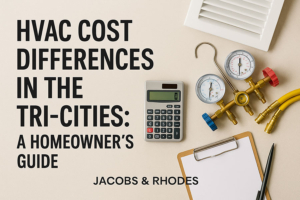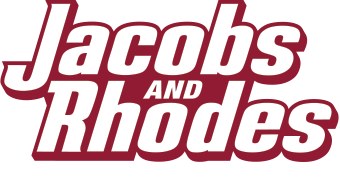HVAC Cost Differences in the Tri-Cities: A Homeowner’s Guide

How Much Does HVAC Cost in the Tri-Cities?
If you live in Kennewick, Pasco, or Richland, you already know how extreme the seasons can be. From blazing summer heat to freezing winter lows, a reliable HVAC system isn’t optional—it’s essential.
But how much should you expect to pay for installation, maintenance, or repairs in the Tri-Cities? The answer depends on a few key factors. This guide breaks it down so you know what to budget for and how to save money in the process.
What Affects HVAC Costs in the Tri-Cities?
Several variables impact what you’ll pay for a new system or service. Here’s what to consider:
1.
Type of System You Choose
Your HVAC setup determines most of the cost upfront. Here are the most common systems in the Tri-Cities:
-
Central Air & Furnace Combos: The go-to for most homes. Expect to pay $6,000–$12,000 depending on system size, brand, and efficiency.
-
Heat Pumps: Great for year-round comfort and energy efficiency. Cost range: $7,000–$15,000.
-
Ductless Mini-Splits: Ideal for homes without ductwork. Costs range from $3,000–$10,000 per zone, especially for multi-room installs.
-
High-Efficiency Upgrades: These come with a higher price tag—often 20–30% more—but deliver lower energy bills and qualify for rebates.
2.
Home Size and Layout
The bigger the home, the more powerful (and costly) the system:
-
1,500 sq. ft. home: Usually needs a 2.5-ton system → $6,000–$9,000
-
2,500 sq. ft. home: Typically requires a 4-ton system → $9,000–$15,000
Multiple floors, poor insulation, or complex ductwork layouts can also increase your total cost.
3.
Installation Complexity
The condition of your current system matters. Here’s what adds to the bill:
-
New ductwork: Add $2,500–$5,000+
-
Difficult access (attics, crawl spaces, tight areas)
-
Upgraded electrical or permits required
Installing from scratch or upgrading an older system usually costs more than a simple replacement.
4.
Rebates and Tax Credits
Live in the Tri-Cities? You may qualify for incentives:
-
Benton PUD & Franklin PUD programs
-
Energy Trust of Oregon (if near the border)
-
Federal tax credits for energy-efficient systems
These can knock $500–$2,000 off the cost of a new system. Be sure to ask your contractor what’s available.
5.
Seasonal Demand and Timing
HVAC prices peak during hot summers and cold winters. If you need emergency service in July or December, expect a 10%–30% markup due to demand.
Pro tip: Book installs in spring or early fall—contractors are less busy, and you’re more likely to score off-season discounts.
HVAC Maintenance & Repair Costs in the Tri-Cities
Beyond installation, regular care keeps your system running efficiently. Here’s what to expect:
Annual Maintenance Costs
Most homeowners spend $150–$300/year for a tune-up. This includes:
-
Filter replacements
-
Refrigerant checks
-
Electrical inspections
-
Coil cleaning
-
Performance testing
Want extra protection? Maintenance plans (with two visits per year and repair discounts) run $200–$500 annually.
Common Repair Costs
Even well-maintained systems break down occasionally. Typical repair costs include:
-
Capacitor replacement: $150–$400
-
Refrigerant recharge: $200–$600
-
Thermostat replacement: $200–$500
-
Blower motor: $400–$1,200
-
Compressor replacement: $1,500–$3,500
If your unit is 10+ years old, repairs may not be worth it. A full replacement could save you more in the long run.
How to Save on HVAC Costs in the Tri-Cities
Want to stretch your budget? Use these strategies:
-
Choose high-efficiency systems to qualify for rebates and lower utility bills
-
Stay on top of maintenance to avoid costly breakdowns
-
Get multiple quotes before committing to a contractor
-
Ask about financing options—many local HVAC companies offer monthly payment plans
-
Schedule work during off-peak seasons for the best pricing
Final Thoughts
HVAC costs in the Tri-Cities vary widely, but with the right system, timing, and contractor, you can make a smart investment that pays off in comfort and energy savings.
At Jacobs and Rhodes, we’ve been helping Tri-Cities homeowners stay comfortable for decades. Whether you need a repair, a new system, or just some expert advice—we’re here to help.
Ready for a quote or consultation?
Contact us today and let’s keep your home comfortable—no matter the season.


